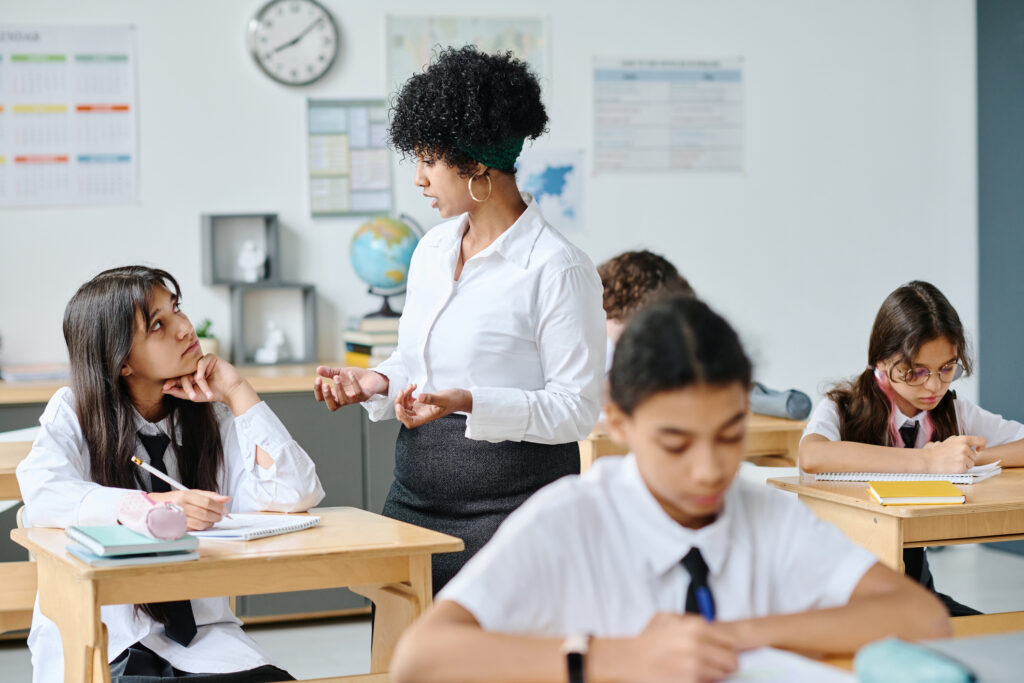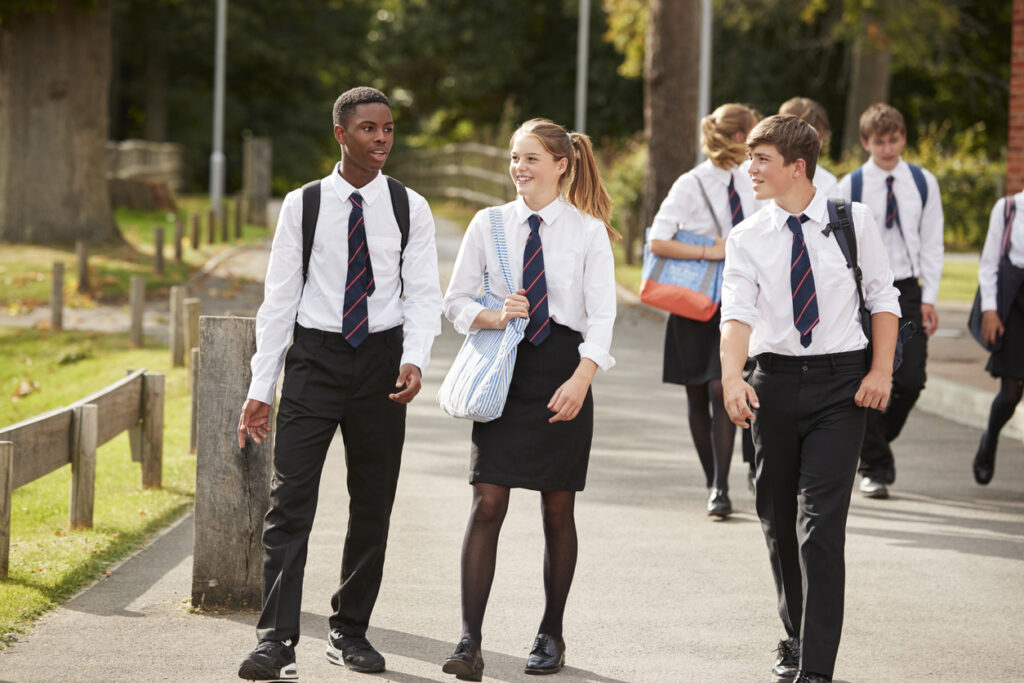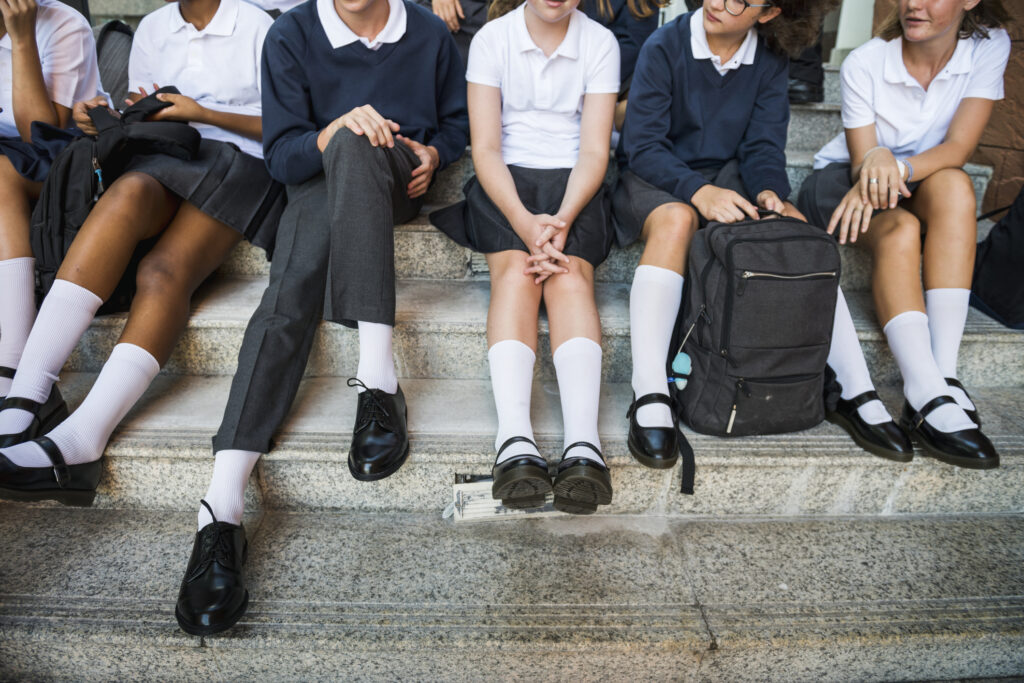Transitioning back to the classroom after the summer holidays can be a challenge for vulnerable pupils – this back-to-school safeguarding guide is here to help.
The summer holidays are a high point of the year for a lot of young people. But, for many, it’s a time of increased risk. As a result, some may face new or increased challenges when they come back to school.
School leaders and staff will need to know how best to support vulnerable young people when they’re back in the classroom. While it can seem overwhelming, good preparation can set you up for safeguarding success.
Here are the nine areas you’ll need to consider before the new school year starts:
- Identifying vulnerable pupils early.
- Revisiting safeguarding policies.
- Spotting signs of abuse or neglect.
- Supporting mental health and wellbeing.
- Getting parents and guardians involved.
- Creating a culture of trust.
- Providing staff training.
- Educating pupils.
- Responding to incidents with care.
But first, let’s take a closer look at what risks young people are most likely to face when they’re away from school for the summer.
Summer holidays safety risks

Being away from school can mean being away from structure, regular socialisation, and sufficient adult supervision.
This can cause a variety of risks for young people, including:
- Online Safety: Young people are likely to spend more unsupervised time online during the summer holidays, putting their digital safety at risk. This makes them more vulnerable to online grooming, radicalisation, and cyberbullying.
- Bullying: Without the supervision of teachers, some young people may also be more vulnerable to in-person bullying.
- Discrimination: Some forms of targeted bullying are discriminatory. For example, if a young person is targeted for factors including their race and faith, sex, gender, gender reassignment, sexual orientation, or pregnancy, that is considered discrimination under the Equality Act 2010.
- Cost-of-Living Crisis: Low-income families may not be able to afford trips away or enriching experiences for their children. Parents or guardians may also be unable to take much time off work. This can influence children’s mental health, contribute to feelings of withdrawal, and leave them feeling like the odd one out amongst peers.
- Mental Health and Wellbeing: With less structure, young people can fall out of healthy habits that support their mental health and wellbeing. This can lead to a variety of issues, from anxiety and depression to body image and self-harm risks.
- Child Abuse and Exploitation: Some young people are more at risk of abuse, neglect, and child exploitation over the summer holidays, without teachers around to spot signs. Female pupils may also be at risk of being taken abroad for female genital mutilation (FGM).
- Drugs, Alcohol and Weapons: With less to do, young people may turn to drugs or alcohol during the summer holidays. With rising concern surrounding county lines, there is also an increased risk of falling into weapon, gang or knife crime.
These issues might occur or worsen over the summer holidays, but the effects can be much longer lasting.
So, it’s important that you and your staff are equipped to support any vulnerable children in their transition back to school.
Back-to-school safeguarding for vulnerable young people

With a long list of potential risks, it can be difficult to know where to start or what to do. This guide is here to provide you with all the back-to-school safeguarding advice and resources you need.
The safeguarding advice in this guide is in line with the Department for Education (DfE) Keeping Children Safe in Education guidance.
1. Identifying vulnerable pupils early
Early identification can make all the difference when it comes to safeguarding vulnerable young people.
So, school leaders should start the academic year by reviewing pupils’ records, communicating with previous teachers, and paying close attention to any behavioural changes or signs of distress.
Understanding a student’s background, such as family issues, special educational needs, or past trauma, can help educators provide the necessary support before issues escalate.
Regular check-ins and observations during the first few weeks of term can also be valuable.
SEMH, SEND, and neurodiverse pupils
It’s important to consider the unique challenges that pupils with SEND, pupils with SEMH needs, and neurodiverse pupils may face. They may require tailored support.
For SEMH pupils, look out for signs of anxiety, emotional distress, or difficulty in social interactions. For pupils with SEND and neurodiverse pupils, be mindful of behaviours that could be misunderstood if not seen through the lens of their specific needs.
Teachers should collaborate closely with SENCOs (Special Educational Needs Coordinators) and other support staff to ensure that these pupils receive the appropriate accommodations and interventions.
2. Revisiting safeguarding policies
We’d recommend starting the year by revisiting safeguarding policies with your staff. That way, you can be sure of alignment with the latest protocols and procedures.
This is also a good opportunity to carry out a school safeguarding audit and review key documents, such as the school’s child protection policy, drug policy, and behaviour policy.
It’s essential that all staff members are familiar with these policies and understand their role in safeguarding. Regular reminders and accessible resources can help maintain a high standard of awareness throughout the year.
3. Spotting signs of abuse or neglect
All school leaders and educators need to be able to recognise indicators that a child may be at risk – and know how to respond. This requires vigilance and an understanding of different signs of abuse.
These indicators might include unexplained injuries, signs of malnutrition or sudden weight loss, or withdrawal from peers. In the case of sexual abuse, look out for signs such as advanced sexual knowledge, inappropriate sexual behaviours, or fear of certain adults.
If you are concerned that a child has undergone FGM (female genital mutilation), look out for any difficulties with sitting or walking, or a sudden change in behaviour. This is often easier to spot when a child has had a prolonged absence from school. So, it’s important to be extra vigilant after the summer holidays.
Concerned about FGM in your school? Educate pupils about warning signs and ways to access help through our FGM lesson plan, created in partnership with Milk Education. For free access, get in touch.
For all forms of abuse, immediate action can prevent further harm and ensure the child receives the necessary support. This might include reporting concerns to the designated safeguarding lead.
4. Supporting mental health and wellbeing
The return to school can be particularly challenging for those dealing with anxiety, depression, and other mental health issues. This can lead to a range of issues, including a change in academic performance or emotional school-based avoidance (EBSA). The NHS has some in-depth insights and advice on dealing with EBSA.
Schools should have clear strategies in place and access to resources, such as counselling services, mental health education, and peer support programmes. Be ready to signpost these to pupils at the start of the new school year.
It’s also important to cultivate a supportive environment where mental health is openly discussed. This can further reduce stigma and encourage pupils to seek help when needed.
Mental health upskilling for teachers
To ensure all educators are equipped to deal with mental health issues at school, access discounted mental health CPD courses through Milk Academy. These include:
- Depression Awareness Certification.
- Bipolar Awareness Certification.
- Anxiety Awareness Certification.
- Mental Health First Aid Certification.
- Mindfulness for Children Certification.
- Self-harm Awareness Certification.
- Trauma Awareness Certification.
Use code MLK at checkout for 45% off all Milk Academy courses!
5. Getting parents and guardians involved
Where possible, involve parents and guardians in safeguarding efforts. This is a great way to create a stronger support network for your pupils.
Communication between the school and home can make it easier to identify and address any concerns early on. Signposting to parents can also ensure that young people get the support they need both in and out of school.
Consider engaging parents through meetings, workshops, and newsletters, to provide information on safeguarding practices and how they can contribute.
6. Creating a culture of trust
Creating a culture of trust is fundamental to effective safeguarding. Pupils need to feel confident that they can share their concerns with trusted adults without fear of judgment or repercussions.
This sort of culture can only be built through consistent, open communication, showing empathy, and ensuring that all pupils are treated with respect.
If pupils do not have a positive home life, a supportive school culture can be a lifeline. When trust is established, pupils are more likely to report issues, seek help, and engage positively in their learning environment.
7. Providing staff training
Staff training is a good way to ensure all staff are prepared to support vulnerable young people right from the start.
Training sessions should cover a range of topics, including the latest safeguarding policies, recognising signs of abuse, and understanding mental health challenges. This will create alignment across the school and give staff confidence in their ability to respond appropriately to any concerns or issues.
Ideally, this sort of training will be carried out as part of your school’s inset day. Regular refreshers throughout the year will ensure all staff members are equipped with the knowledge and skills to protect pupils effectively.
Get in touch for big discounts on tailored back-to-school CPD bundles, delivered in partnership with Milk Academy. Ideal for inset day upskilling and regular refreshers, our courses cover a huge variety of topics, from safeguarding to self care and everything in between.
8. Educating pupils
Empower your pupils to protect themselves and others. Education on tough and stigmatised topics can give young people the tools they need to keep themselves safe.
Schools should consider integrating safeguarding education into the curriculum. Providing age-appropriate resources and discussions will help your pupils understand how to identify risks and know when to seek help.
Get free access to a range of lesson plans on topics including boundaries and consent, anti-racism, disability, neurodiversity, and online safety. Get in touch today or DM us on LinkedIn to enquire.
School speakers
For education that really makes an impact, check out our Make Life Kind Charity school speakers.
Each school speaker uses their own story to connect with pupils and encourage them to make positive choices. Their goal is to inspire young people, while giving educators the tools they need to tackle tough topics. These include:
- Diversity and inclusion.
- Mental health and wellbeing.
- Neurodiversity.
- Knife crime.
- Drug crime.
- Youth violence.
- Anti-racism.
- Online safety.
- Body positivity.
To find out more about the amazing work and impact of the Make Life Kind school speakers, check out the charity’s LinkedIn page and Instagram.
Message us or the charity today to enquire about booking our speakers for your school!
9. Responding to incidents with care
When safeguarding incidents occur, responding with care and precision is essential to protect the affected students and prevent further harm.
Schools must have clear procedures in place for reporting and managing incidents, ensuring that all actions are in line with legal requirements and best practices.
Be sure to handle each case with sensitivity, maintaining confidentiality and prioritising the wellbeing of the young person involved. When doing so, it’s crucial to consider alternatives to exclusion. Exclusions can further marginalise vulnerable pupils and exacerbate their challenges.
A well-coordinated response, involving relevant authorities and support services, can help to resolve issues effectively and support pupil wellbeing.
Safeguarding at the start of the school year
Safeguarding best practices are relevant all year round. So, start the year as you mean to go on – with a robust approach to pupil safety and wellbeing.
If you’re in need of leaders or educators who can create a positive educational environment for your pupils, we can help.
MLK Education Search is run by former senior school leaders with a passion for improving the education sector. Get in touch today for more information on safeguarding in schools and how we can support you in your search for incredible school staff.




